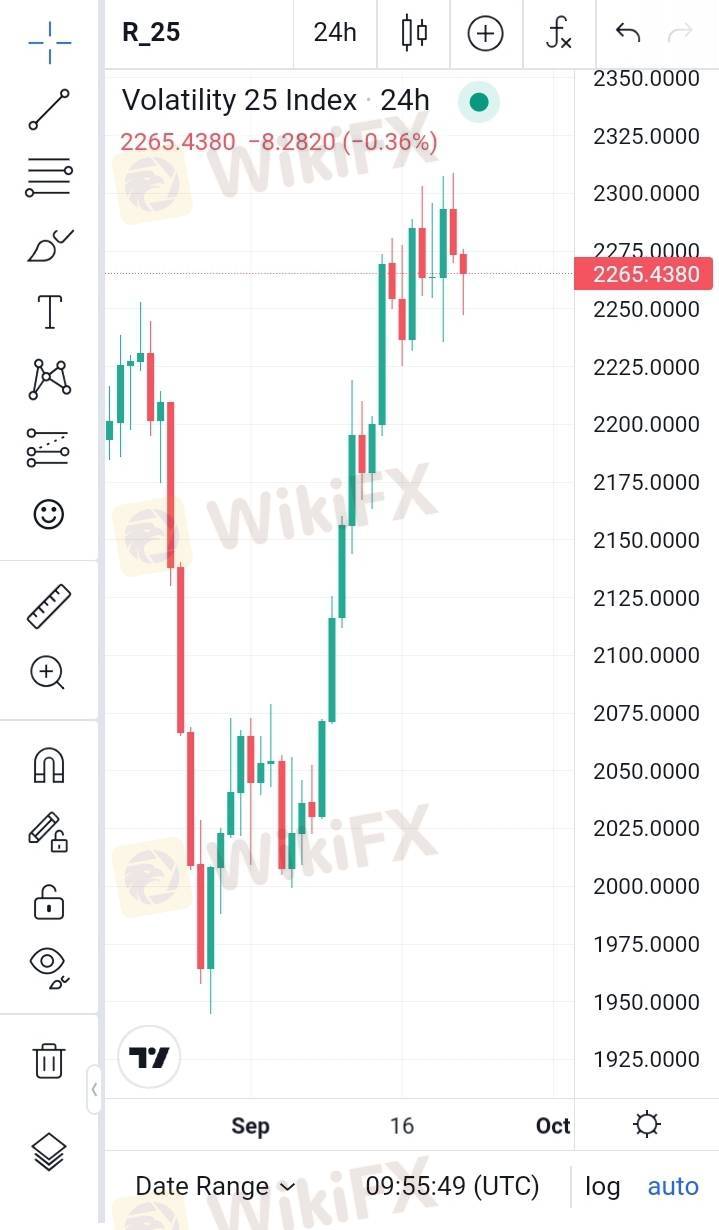2024-09-22 18:02
IndustrySwing Trading Strategy
1. Breakout Trading
Buy when price breaks through resistance.
- Identify strong resistance levels.
- Wait for a breakout above resistance.
- Enter long position with a stop-loss below resistance.
- Set profit targets at next resistance levels.
Example:
- Bitcoin's price is consolidating between $40,000 and $45,000.
- Breakout above $45,000 triggers a long entry.
- Stop-loss at $43,000, profit target at $50,000.
2. Pullback Trading
Buy during price pullbacks.
- Identify uptrend.
- Wait for pullback to support levels.
- Enter long position with a stop-loss below support.
- Set profit targets at next resistance levels.
Example:
- Bitcoin's price is trending up from $40,000 to $50,000.
- Pullback to $45,000 triggers a long entry.
- Stop-loss at $43,000, profit target at $55,000.
3. Reversal Trading
Identify and trade reversals.
- Identify reversal patterns (e.g., head-and-shoulders, inverse head-and-shoulders).
- Wait for confirmation of reversal.
- Enter long/short position with a stop-loss.
- Set profit targets at next support/resistance levels.
Example:
- Bitcoin's price forms a head-and-shoulders pattern.
- Breakdown below neckline triggers a short entry.
- Stop-loss above neckline, profit target at next support.
4. Mean Reversion
Trade based on statistical models predicting price reversals.
- Use indicators like RSI, Bollinger Bands.
- Identify overbought/oversold conditions.
- Enter long/short position with a stop-loss.
- Set profit targets at next support/resistance levels.
Example:
- Bitcoin's RSI falls below 30.
- Buy signal triggered with stop-loss at recent low.
- Profit target at next resistance.
Key considerations for Swing Trading:
- Risk management: Set stop-losses and position sizes.
- Market context: Consider news, trends, and market sentiment.
- Trading discipline: Stick to strategy and avoid emotional decisions.
Like 0
FX1815522271
Agent
Hot content
Industry
Event-A comment a day,Keep rewards worthy up to$27
Industry
Nigeria Event Giveaway-Win₦5000 Mobilephone Credit
Industry
Nigeria Event Giveaway-Win ₦2500 MobilePhoneCredit
Industry
South Africa Event-Come&Win 240ZAR Phone Credit
Industry
Nigeria Event-Discuss Forex&Win2500NGN PhoneCredit
Industry
[Nigeria Event]Discuss&win 2500 Naira Phone Credit
Forum category

Platform

Exhibition

Agent

Recruitment

EA

Industry

Market

Index
Swing Trading Strategy
 | 2024-09-22 18:02
| 2024-09-22 18:021. Breakout Trading
Buy when price breaks through resistance.
- Identify strong resistance levels.
- Wait for a breakout above resistance.
- Enter long position with a stop-loss below resistance.
- Set profit targets at next resistance levels.
Example:
- Bitcoin's price is consolidating between $40,000 and $45,000.
- Breakout above $45,000 triggers a long entry.
- Stop-loss at $43,000, profit target at $50,000.
2. Pullback Trading
Buy during price pullbacks.
- Identify uptrend.
- Wait for pullback to support levels.
- Enter long position with a stop-loss below support.
- Set profit targets at next resistance levels.
Example:
- Bitcoin's price is trending up from $40,000 to $50,000.
- Pullback to $45,000 triggers a long entry.
- Stop-loss at $43,000, profit target at $55,000.
3. Reversal Trading
Identify and trade reversals.
- Identify reversal patterns (e.g., head-and-shoulders, inverse head-and-shoulders).
- Wait for confirmation of reversal.
- Enter long/short position with a stop-loss.
- Set profit targets at next support/resistance levels.
Example:
- Bitcoin's price forms a head-and-shoulders pattern.
- Breakdown below neckline triggers a short entry.
- Stop-loss above neckline, profit target at next support.
4. Mean Reversion
Trade based on statistical models predicting price reversals.
- Use indicators like RSI, Bollinger Bands.
- Identify overbought/oversold conditions.
- Enter long/short position with a stop-loss.
- Set profit targets at next support/resistance levels.
Example:
- Bitcoin's RSI falls below 30.
- Buy signal triggered with stop-loss at recent low.
- Profit target at next resistance.
Key considerations for Swing Trading:
- Risk management: Set stop-losses and position sizes.
- Market context: Consider news, trends, and market sentiment.
- Trading discipline: Stick to strategy and avoid emotional decisions.
Like 0
I want to comment, too
Submit
0Comments

There is no comment yet. Make the first one.

Submit
There is no comment yet. Make the first one.